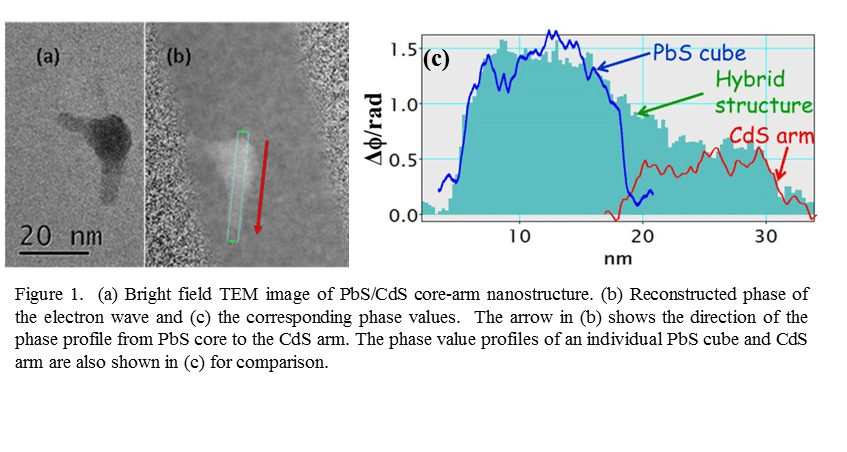Semiconducting Hybrid Nanoparticles (HNPs) show synergistic properties in addition to size-dependent effects at the nanoscale. Therefore, it is important to map charge separation across junctions of HNPs, which is responsible for interesting optical and electrical properties.
We synthesized HNPs with a PbS core and CdS arms that exhibit well-defined epitaxial relations. We observe in HNPs that fluorescence emission corresponding to CdS is quenched, which may be due to the charge recombination in the PbS core. To test this assumption, we used off-axis electron holography (OAEH) in the transmission electron microscopy to map the electrostatic potential across the heterojunction1,2. OAEH was applied at an accelerating voltage of 80kV to samples cooled below 100K.
Phase profiles of HNPs differ from those of separate PbS and CdS nanoparticles (typical example in Fig 1). For separate particles, the phase value within the particles is approximately equal followed by a sharp drop at the edges. In HNP, the phase change across the interface is gradual. In particular, the phase values along the CdS arm show a gradual increase towards the PbS core. This comparison indicates band-bending towards the interface. A finite-element 3D solution of the Poisson equation for PbS/CdS HNPs illustrates a type I interface in which charge carriers formed on CdS arms by optical excitation, flow to lower energy levels within the PbS core, thus preventing recombination in the arm. This in turn is manifested as dynamic quenching of the CdS photoluminescence.
References:
1. A. Kohn et al., Ultramicroscopy, 138, 36 (2014)
2. P. A. Midgley et al., Nature Materials, 8, 271 (2009)


